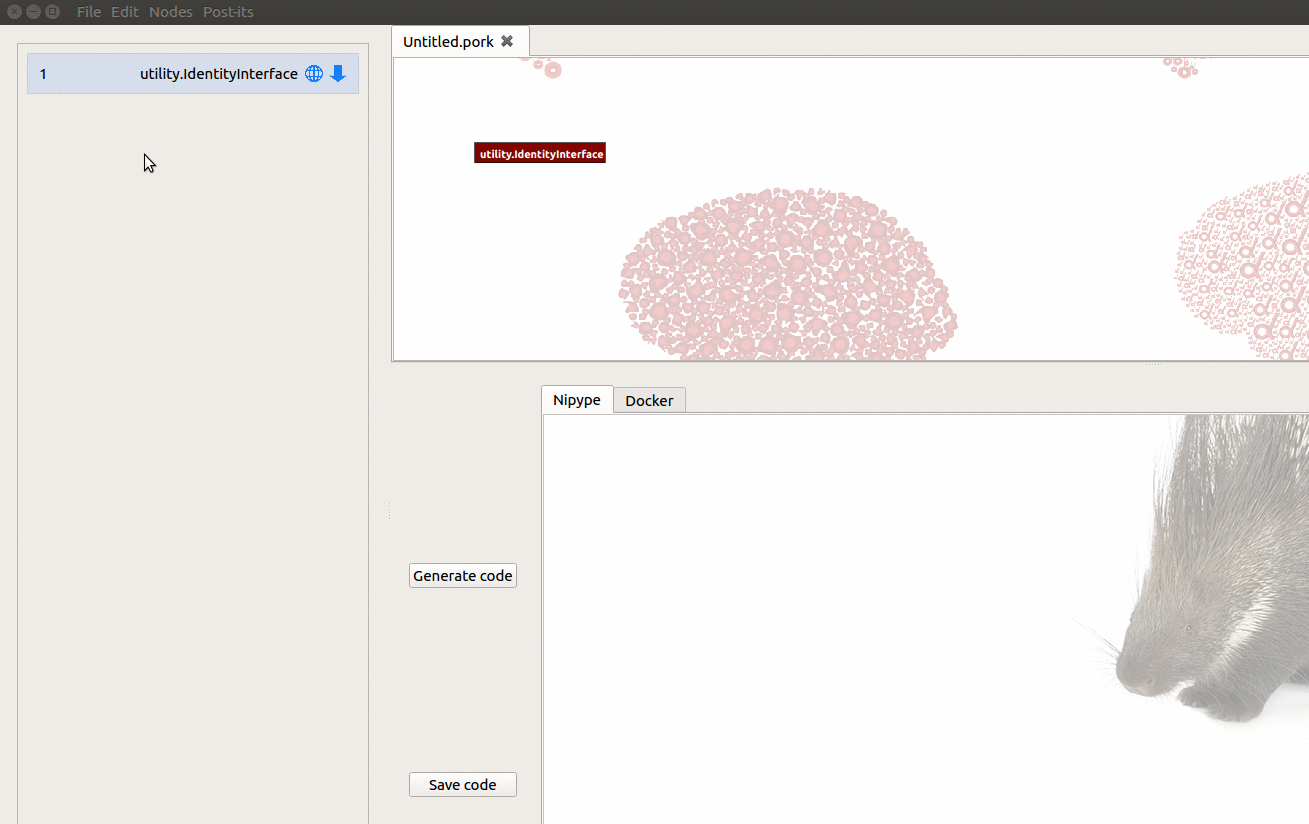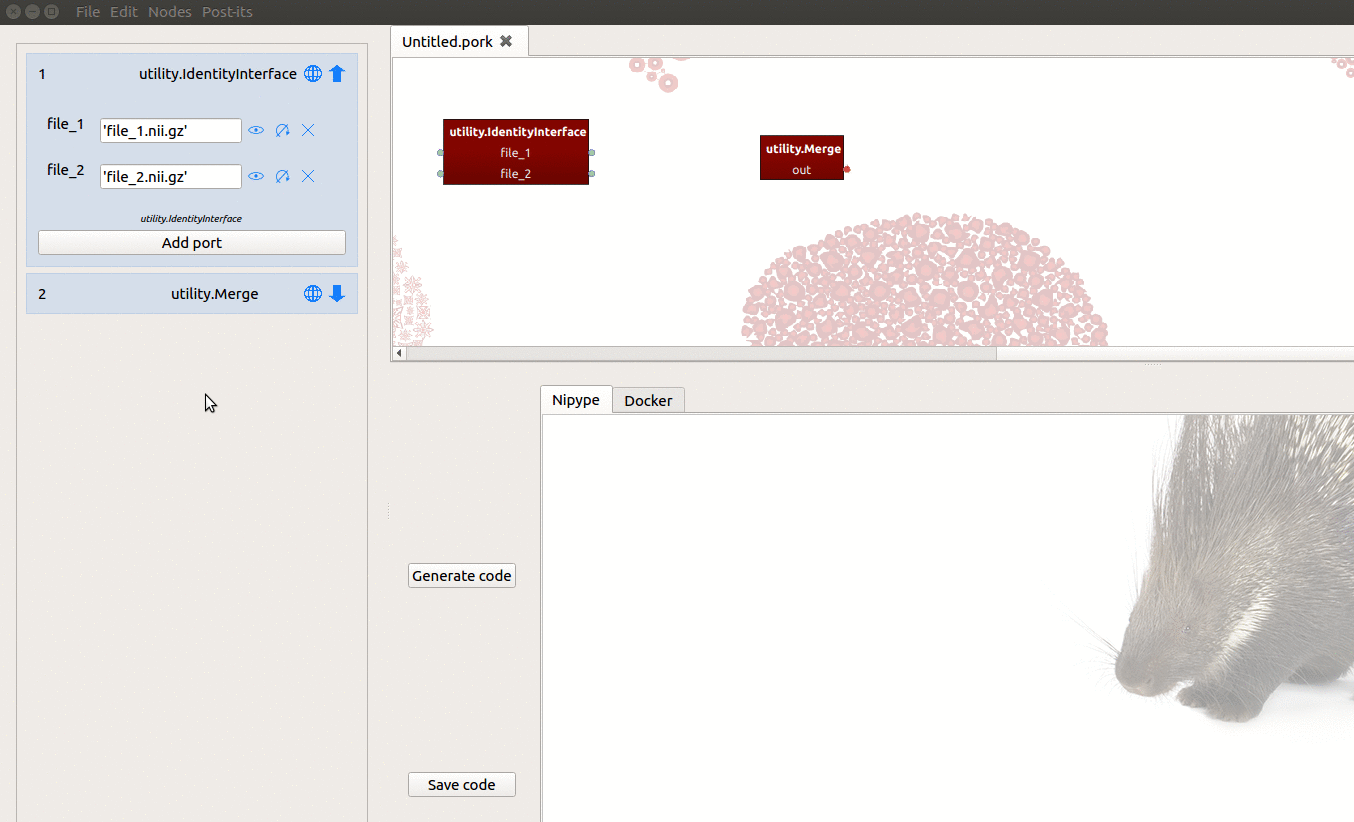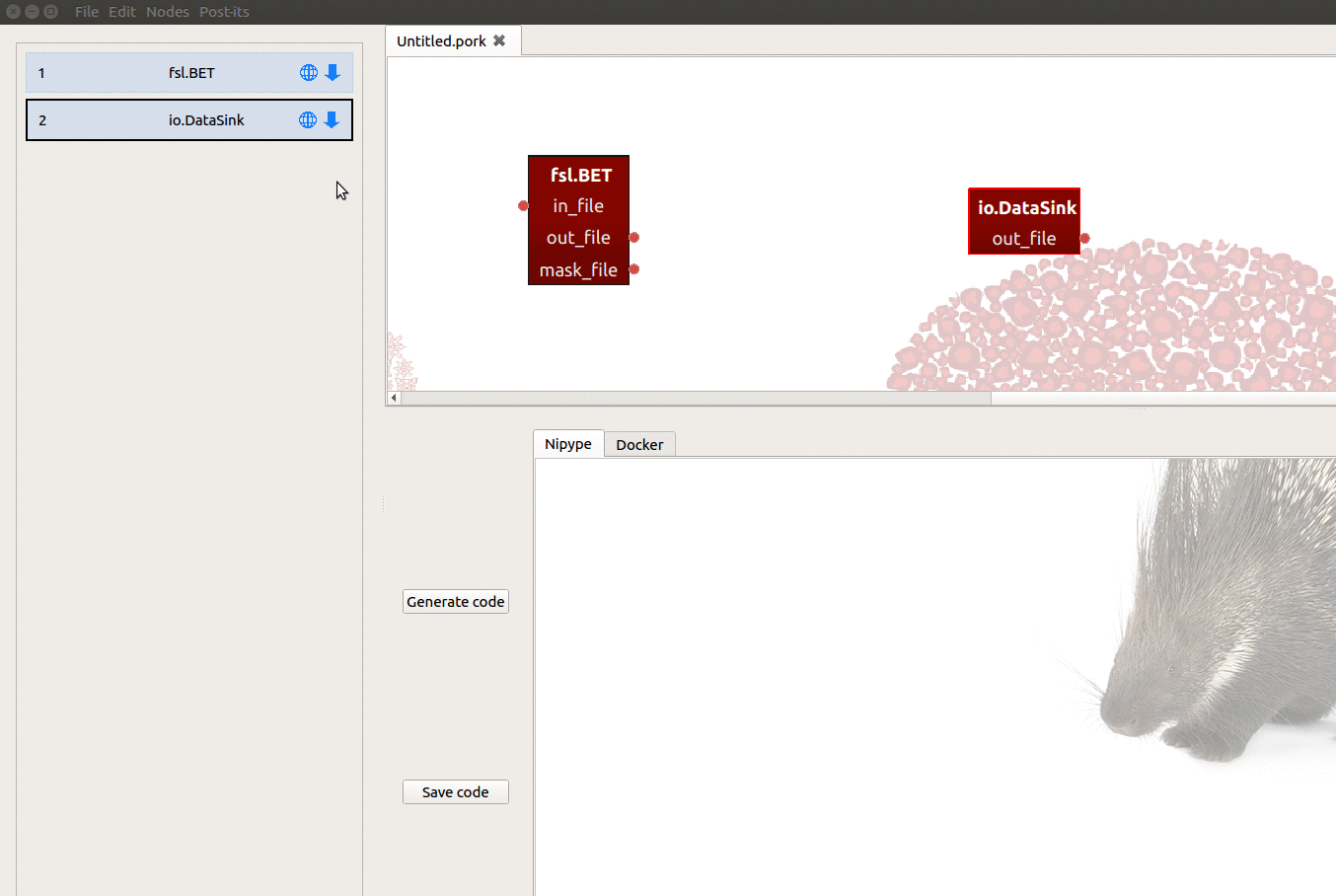Manually adding ports
In the previous chapter we already added some manual ports, and here we dive a little deeper in the underlying reasons. Most of Nipype nodes have prespecified input and output-ports. Nipype calls these ports “InputSpecs” and “OutputSpecs”, which are Python objects whose attributes correspond to the interface’s inputs and outputs. After initialization of an FSL BET interface for example, these inputs and outputs (as defined in the InputSpec and OutputSpec) are available from the interface’s input and (after running the interface) the output attributes:
>>> from nipype.interfaces.fsl import BET
>>> from nipype.pipeline import Node
>>> bet_node = Node(BET(), name='BET')
>>> bet_node.inputs
args = <undefined>
center = <undefined>
environ = {'FSLOUTPUTTYPE': 'NIFTI_GZ'}
frac = <undefined>
...
>>> bet.outputs
inskull_mask_file = <undefined>
inskull_mesh_file = <undefined>
mask_file = <undefined>
meshfile = <undefined>
out_file = <undefined>
...
Dynamic ports
Some Nipype-interfaces, however, do not have a prespecified set of inputs and
outputs. These InputSpecs and OutputSpecs are dynamic, in the sense that
they are dynamically created based on parameters during initialization of the
interface. A clear example of such an interface that uses this dynamic input/output
generation is Nipype’s IdentityInterface, an interface that performs
a simple “identity transformation” (i.e., just transfer input to output without
doing anything to it). This interface needs the parameter fields
(a list of strings) upon initialization. During initialization of this interface,
each value from the fields parameter will be used to dynamically create both
an input and an output with the same name.
So, suppose I initialize a node based on the IdentityInterface with the
fields parameters set to ['A', 'B'], then it will create two inputs and
outputs with the names A and B:
>>> from nipype.interfaces.utility import IdentityInterface
>>> from nipype.pipeline import Node
>>> ii_node = Node(IdentityInterface(fields=['A', 'B']), name='BET')
>>> ii_node.inputs
A = <undefined>
B = <undefined>
>> ii_node.outputs
A = <undefined>
B = <undefined>
Handling dynamic ports in Porcupine
Porcupine is able to set the values of existing input-ports, but cannot do
so for ports that are dynamically generated. To circumvent this exception, we
added the option to manually add input and/or output-ports yourself! As should
become clear from the figure below, it’s as easy as selecting “Add port” button
(located at the very bottom of each node in the node editor), choosing the port’s
name, and indicating whether it will be an input, output, or both input/output
port (as in the IndentityInterface):

As you can see, after adding the input/output port my_custom_port in the above gif,
both the node in the workflow editor is updated and the IdentityInterface is
initialized correctly with the fields parameter, rendering valid Nipype-code.
Another example: the Merge interface
The previous two examples (the IdentityInterface and SelectFiles interface)
were examples in which a particular initialization parameter (e.g. fields) is
necessary; that is, the Nipype-script would crash if the interface would be
initialized without said parameter.
There are other interfaces, however, that depend on dynamically created ports,
but not (necessarily) on a mandatory initialization parameter. For these interfaces,
we didn’t need to write an exception for our Porcupine code-generator (as we did for
the IdentityInterface and SelectFiles interfaces), because the user can simply
add the necessary ports him/herself.
This sounds perhaps a little abstract, so let’s look at an example of such an
interface that needs manually added ports but not (necessarily) a mandatory
initialization parameter: the Merge interface.
The Merge interface merges the values from a variable amount of input-ports
(which should be named in1, in2, …, inx for an x number of input-ports)
into a list. Suppose I want to merge two inputs using the Merge interface;
in that case, I would need to create two custom input-ports named in1 and in2,
as shown below:

Another example: the DataSink interface
As a last example of using manually added ports, let’s look at the Nipype’s
DataSink interface. This is already covered a little bit in the previous chapter. This interface is somewhat special because it creates
input-ports based on how connections to the DataSink node are defined.
In other words, if I connect for example the out_file of an FSL BET-node to
the DataSink interface using the default Nipype syntax …
workflow.connect(BET_node, 'out_file', datasink_node, 'skullstrip_results')
… then the input-port skullstrip_results is actually dynamically generated.
In Porcupine, you can solve this by simply manually adding a skullstrip_results
input-port to your DataSink node, as shown below:

Note that you should name the input-ports of the DataSink node in Porcupine
just like you would in Nipype, i.e., using periods (.) and @ for sinking
results to the same output-directory (or subdirectory when you use @).